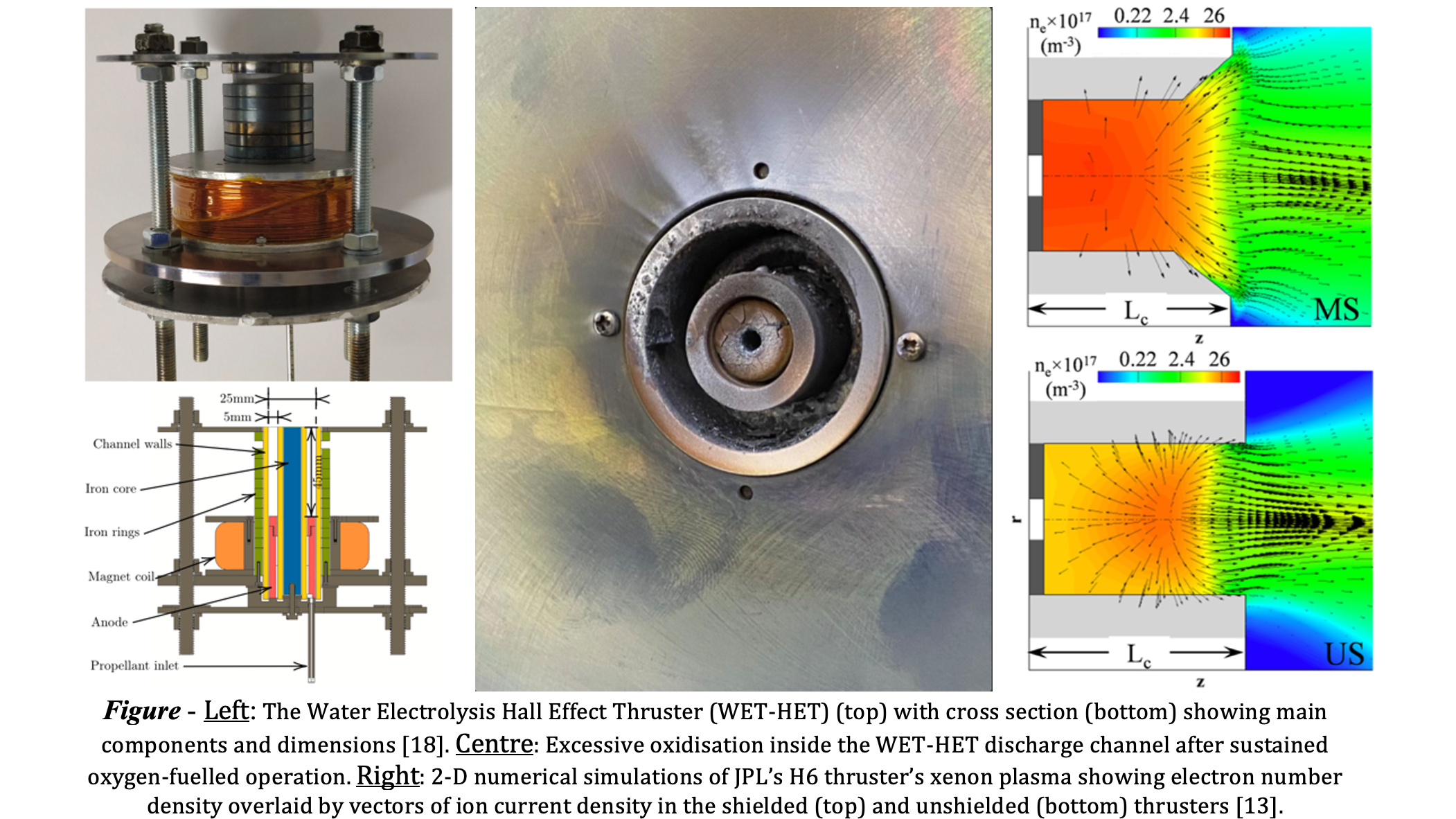Duration: 36 months
The purpose of this research is to investigate the use of both magnetic shielding and novel material coatings to reduce discharge channel degradation and increase the performance of oxygen-fuelled Hall Effect Thrusters (HETs). This work aims to eliminate surface erosion, whilst reducing oxidisation and wall losses within the Water ElecTrolysis Hall Effect Thruster (WET-HET), developed by the Imperial Plasma Propulsion Laboratory (IPPL). Here, electrolysis is used to separate water into oxygen (for the propellant) and hydrogen (the cathode working gas). Increased channel erosion due to thruster material exposure to oxygen plasmas is evident, as can be seen in the Figure above. This issue has a potentially severe life-limiting effect which could stunt the technical development of this device, whose prior performance shows the promise this technology has on the future of sustainable space applications. Ultimately, this project aims to show an increase in the endurance and performance capabilities of the WET-HET to levels necessary for substantial space applications. The research concerning novel materials will aim to directly analyse erosion rates and the structure’s ability to resist oxidation during hours of oxygen plasma bombardment. The channel walls and anode caps of an oxygen-fuelled HET shall be investigated, with analyses into the resulting thermal loads and thrust efficiency occurring in parallel. We expect the implementation of magnetic shielding topologies within the WET-HET, coupled with channel geometry modifications, to alter the ion motion inside the plasma such that wall interactions are reduced, whist preserving ion acceleration near the channel centre. The conclusion of this research project aims to include the experimental data and subsequent analysis necessary to prove significant operational improvements. With such performance upgrades, this new generation of low-cost, sustainable electric propulsion devices can become commercially competitive.

